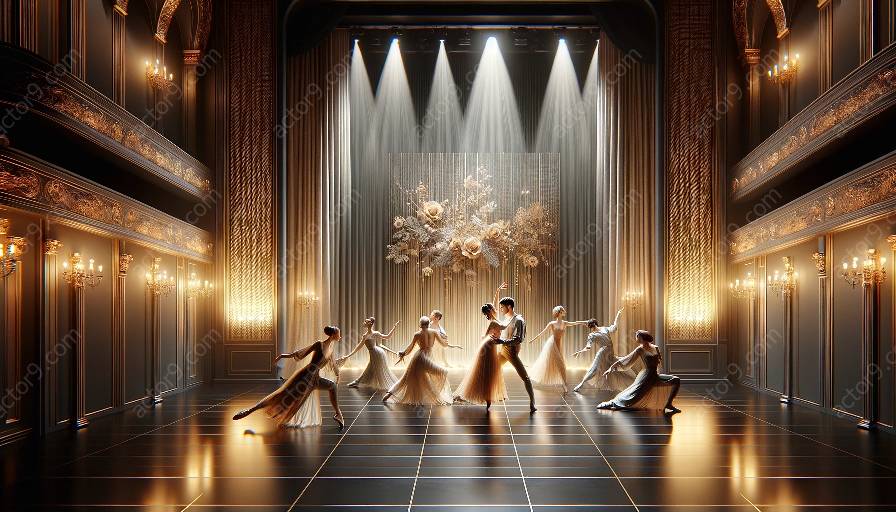When it comes to theatrical performances, the influence of cultural diversity on movement and physical expression is profound. The ways in which various cultures convey emotions, stories, and ideas through movement and physicality have a significant impact on the art of acting and theater. This topic cluster will delve into the rich and varied ways in which cultural diversity influences movement and physical expression in theatrical performances, exploring its effects on the actors, the performance, and the audience.
The Role of Culture in Physical Expression
Cultural diversity plays a pivotal role in shaping physical expression in theatrical performances. Different cultures have distinct traditions, histories, and values, which are reflected in the way individuals move and express themselves. Movement and physicality are deeply rooted in cultural norms, rituals, and traditions, and these influences are brought to the stage by actors and performers.
Body Language and Gesture
One of the most apparent ways in which cultural diversity influences movement and physical expression in theater is through body language and gesture. Across different cultures, gestures and body language can convey a wide range of emotions, meanings, and intentions. For example, a gesture that signifies agreement in one culture may have an entirely different meaning in another. This diversity of interpretation enriches theatrical performances, adding layers of complexity and depth to physical expression.
Dance and Ritual
Many cultures have unique dance forms and rituals that are deeply intertwined with their history and belief systems. These traditional dances and rituals often find their way into theatrical performances, shaping the movement and physical expression of the actors. The graceful movements of a traditional Indian dance, for instance, can bring a sense of elegance and storytelling to a performance, while the powerful and rhythmic movements of African tribal dances can infuse the stage with energy and raw emotion.
Emotional and Physical Expression
The way emotions are physically expressed varies across different cultures. Cultural diversity influences the physical manifestations of joy, sorrow, anger, and other emotions, which in turn impact the portrayal of characters in theater. This diversity of emotional and physical expression enriches the experience for both the performers and the audience, offering a broader spectrum of human experiences to connect with and understand.
Impact on Acting and Theater
The influence of cultural diversity on movement and physical expression extends beyond the stage and into the very fabric of acting and theater as an art form. Actors and performers are constantly drawing from their own cultural backgrounds and experiences to infuse their movements and physicality with authenticity and depth. Furthermore, exposure to diverse cultural expressions fosters creativity and versatility, enabling actors to adapt and embody a wide array of physical forms and expressions.
Choreography and Staging
Choreographers and directors often incorporate diverse cultural movements and physical expressions into their work, creating visually stunning and emotionally impactful performances. The fusion of different movement styles and physical vocabularies adds dynamism and originality to the choreography and staging, offering audiences a multi-dimensional theatrical experience that is enriched by cultural diversity.
Collaborative Creativity
The collaborative nature of theater allows for the integration of diverse cultural influences in the creative process. Actors, directors, and designers from different cultural backgrounds bring their unique perspectives and physical vocabularies to the rehearsal room, fostering a rich tapestry of movement and physical expression. This collaborative creativity not only enhances the authenticity of the performance but also promotes cultural exchange and understanding among the artistic team.
Engaging the Audience
Cultural diversity in movement and physical expression captivates and engages audiences in profound ways. The diverse and authentic physical expressions on stage ignite curiosity and empathy, inviting audience members to connect with the stories and characters on a deeper level. The universal language of movement transcends cultural barriers, enabling audiences from different backgrounds to find resonance and connection in the physical expressions of the performers.
Cultural Appreciation and Understanding
Experiencing a multitude of cultural movements and physical expressions in theatrical performances fosters a greater appreciation and understanding of diverse cultural traditions. Audience members are exposed to a rich tapestry of movement styles, gestures, and dance forms, broadening their cultural perspectives and nurturing a spirit of inclusivity and respect.
Shared Human Experience
Ultimately, the influence of cultural diversity on movement and physical expression in theatrical performances underscores the shared human experience. Regardless of cultural differences, the emotions, stories, and ideas conveyed through movement resonate with our common humanity, reminding us of our interconnectedness and shared journey through life.
Conclusion
Cultural diversity is a wellspring of inspiration and creativity in the realm of movement and physical expression in theatrical performances. The fusion of diverse cultural influences enriches the art of acting and theater, infusing it with authenticity, depth, and universal resonance. Embracing and celebrating cultural diversity in movement and physicality not only enhances the artistic value of performances but also fosters a spirit of unity and understanding among performers and audiences alike.















































